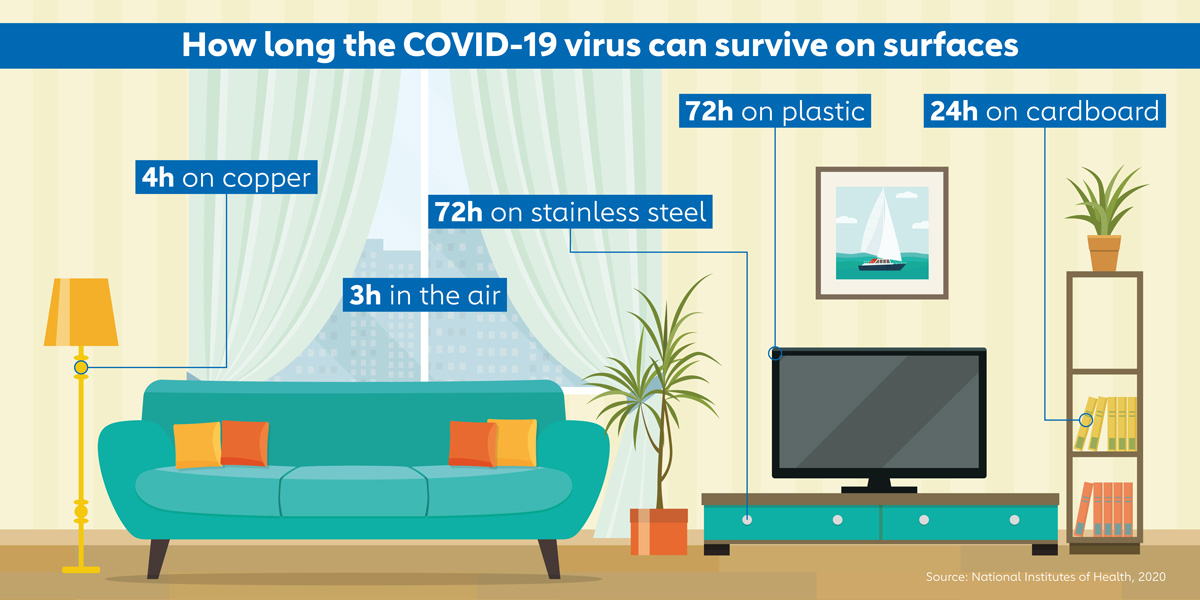What not to touch: how to avoid contact with the new coronavirus
We touch countless objects every day, from house keys to our mobile phones. The virus that causes COVID-19 can last for anywhere from 30 minutes to several hours in the air (in the form of aerosol droplets) before drifting down onto surfaces, where it can survive for many days. Except for automatic doors, most things are not yet contactless. So how do we avoid becoming infected with the new coronavirus just by touching things we use every day?
- 19 March 2020
- 3 min read
- by Priya Joi

Soap or sanitiser
The advice for preventing picking up the new coronavirus through contact with these surfaces is handwashing with soap ideally, or using hand sanitiser if you have no access to soap and water. These may seem incredibly basic measures, but they remain the most effective ways to get rid of any viruses we pick up from touching. Essentially soaps and sanitisers destroy the fatty surface of the virus, stopping it from being able to latch on to us. But washing your hands properly with soap for at least 60 seconds is crucial, and for those who may think about using up spare vodka in their kitchen cabinets, alcohol-based sanitisers need to have at least 60-80% alcohol to be effective. What’s more, sanitisers aren’t effective when used on visibly dirty hands, so you need to wash your hands with soap first.
Beards or clean-shaven
Beards could put health workers at higher risk of the new coronavirus – not because the virus adheres more to facial hair, but because protective masks are not effective when stretched over a beard. The advice, which comes from the US Centers for Disease Control and Prevention (CDC), was apparently not produced in response to this specific pandemic, but health services seem to be passing on the advice, nevertheless.
Handrails and handles
Handrails on trains or buses, door handles, house keys – all of these are metal surfaces on which the virus can survive for up to three days. Although things that only you use (such your house keys) are less risky, the best advice is to sanitise after touching any surfaces and before touching your face.

Mobile phone
Many of us never go anywhere without our mobile phones. Even though they are probably less high risk than public handrails, as we (or our family) are the only people who touch them, wiping them regularly with hand sanitiser is a good idea.
Plastic or paper banknotes
Many countries, including Canada and the UK, use plastic banknotes, made from a polymer that is much harder to counterfeit than paper banknotes. This is bad news in the time of a coronavirus pandemic, however, as the virus can last on plastic for as long as three days, compared with one day for paper and cardboard. Contrary to claims in the media that banknotes can spread the virus and that contactless payments are advisable, WHO maintains that paper banknotes don’t necessarily transmit COVID-19 but that sanitising after touching banknotes, especially before eating or touching your face, is advisable.
The gym
With many countries going into lockdown, it’s unlikely that many gyms will remain open, but for people who still have to access to a gym, cleanliness will be vitally important. Gyms are typically places with people crowded together, who may cough or sneeze and then touch equipment. Wiping down weights or other equipment before using them, and then making sure to wash your hands and sanitise before touching anything else, seems to be the most prudent advice.









